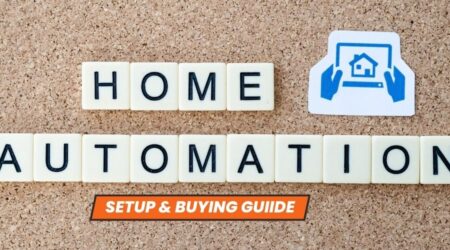The automatic and computerized control of household activities, features, and appliances is referred to as “home automation.”
Simply said, it means you can simply control the appliances and features in your house online to improve convenience, increase security, and even reduce household expenses.
Continue reading to get the answers to some frequently asked questions about home automation technology and to obtain some suggestions for home automation improvements.
Pros and Cons of Home Automation
Home automation has advantages and disadvantages, just like anything else in life. Overall, we believe it to be more than valuable, although depending on your own preferences, it might not be for everyone.
Pros
- Remote access allows you to manage equipment from a distance, such as opening the door for a plant sitter without having to tuck a key under the mat.
- Having a comfortable night’s sleep only to discover that you left the bathroom light on. Smart light bulbs allow you to turn them off from the comfort of your bed without getting out of your luxurious linens.
- Energy conservation: How often do you leave the heat on high while you’re gone for eight hours? You may prevent energy waste by scheduling appliances like thermostats with home automation. For instance, a research indicated that Nest thermostats can save heating and cooling expenditures by roughly 12%. This indicates that these smart thermostats can eventually generate enough savings to cover their cost.
- Convenience: It is quite easy to be able to schedule gadgets, give voice instructions to operate them, and even sync them with sunrise and sunset. Imagine waking up in the morning to freshly toasted bread without having to press a button!
- Safety: Last but not least, there are a variety of smart security solutions that can improve the safety of your house, including sensors for windows and doors, people-detecting security cameras, and video doorbells that enable you answer the door from anywhere with an Internet connection.
Cons
- Costs are a drawback for IoT devices compared to non-WiFi-connected alternatives. For instance, the average ordinary light bulb costs around $5, whereas the average smart bulb costs roughly $32. Home automation isn’t inexpensive overall, depending on where you purchase. Of course, you have to take into account the extra features like remote control, dimming, 16 million distinct colours, and voice integrations, to mention a few.
- Security concerns: It’s unsettling but true: IoT devices may be hacked, and this includes anything connected to the Internet, such as perusing Etsy for a new bedspread or checking in on a motion warning from a smart security camera. IoT device manufacturers from major internet businesses have unfortunately been subject to their fair share of hackings and security lapses; Ring’s cameras, for instance, were notoriously breached, allowing the live feeds to be tampered with. 7 Of course, this is a problem you wouldn’t have with offline devices, but if you want IoT devices, you’ll need to follow some best digital security practises, which are covered later.
- Modern technology: IoT is a very new technology, so you can encounter certain difficulties, such as lag or devices that have trouble connecting to the Internet, depending on the brand and type of the equipment.
- Surveillance: Because users can livestream video from the camera’s lens, smart security is generally not for you if privacy is a major concern.
ALSO READ
You may also like our other related articles on automation :




